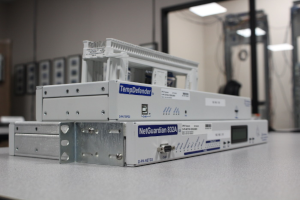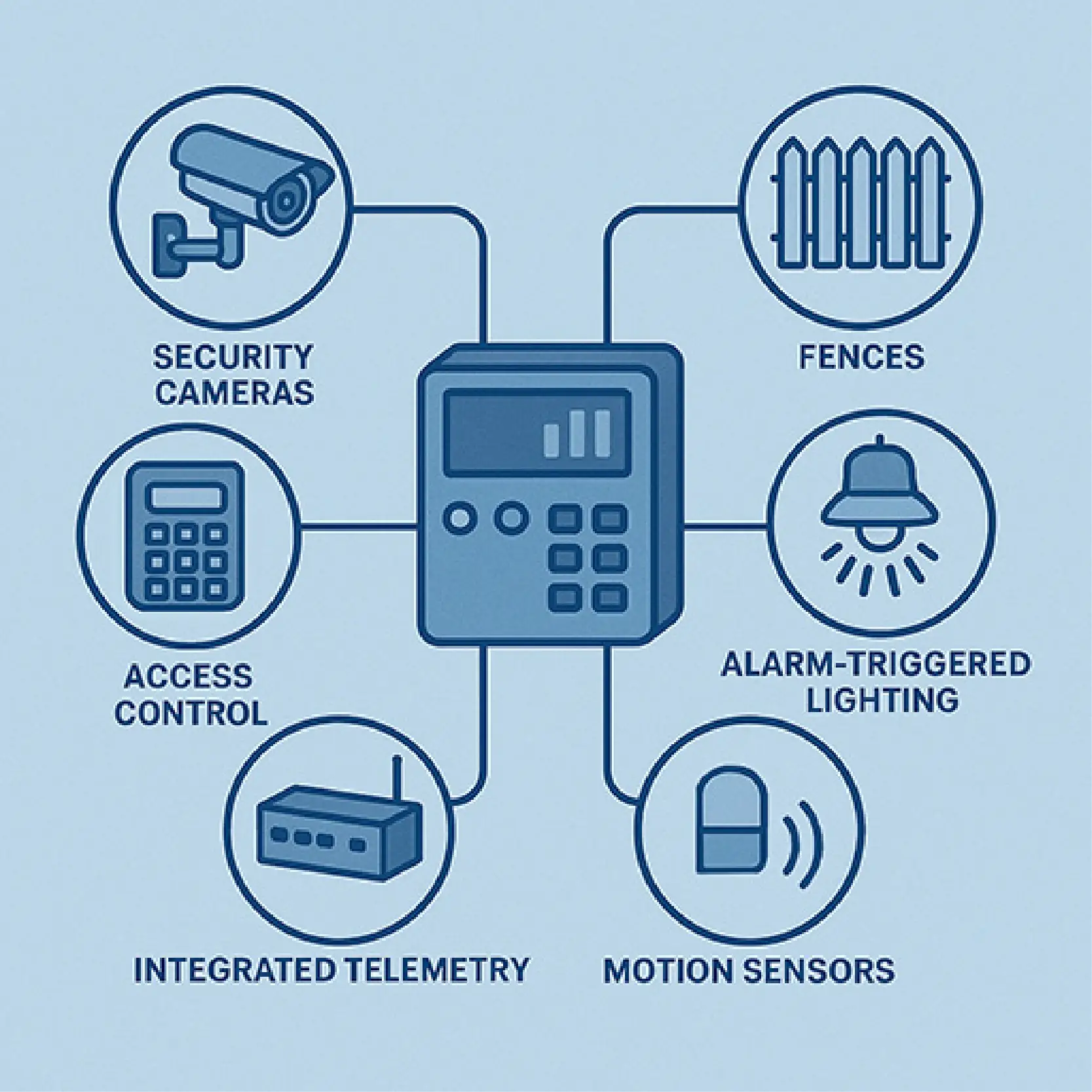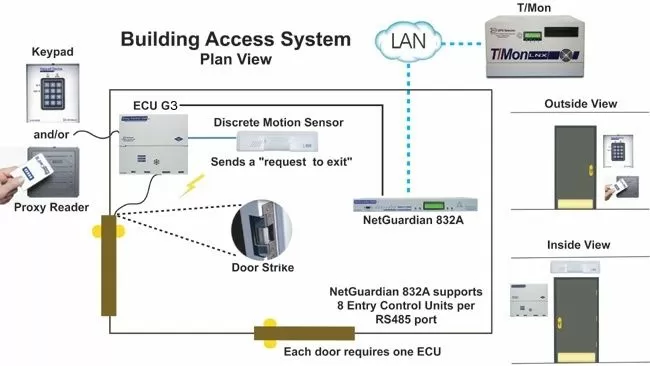Check out our White Paper Series!
A complete library of helpful advice and survival guides for every aspect of system monitoring and control.
1-800-693-0351
Have a specific question? Ask our team of expert engineers and get a specific answer!
Sign up for the next DPS Factory Training!

Whether you're new to our equipment or you've used it for years, DPS factory training is the best way to get more from your monitoring.
Reserve Your Seat TodaySecurity cameras are everywhere.
They're mounted on building corners, watching over warehouses, guarding entry gates, and installed inside facilities. It's no surprise the global video surveillance market is expected to reach over $62 billion by 2027. Cameras do offer benefits - real-time monitoring and video evidence are undeniably useful.
But here's the unfortunate truth: security cameras are not enough.
If you're relying on cameras as your only line of defense, you're leaving dangerous holes in your security strategy. And those holes are where the culprits get in.
Let's break down the real-world problems of camera-only security, and then show you the multi-layered solution your business needs to truly stay protected.

Let's start with what's wrong. While cameras play an important role, they're full of vulnerabilities that can be exploited - often without you realizing it until it's too late.
You might think your system is running perfectly... until it isn't.
CCTV systems can freeze, reboot randomly, or stop recording altogether - often due to:
Even wireless battery-powered cameras aren't safe. Their batteries drain, and when they do, you're left without visibility. You have no alerts or warnings, just critical security downtime.
This isn't unique to cameras. It's simply true that any singular system creates single-point-of-failure risk. You need other overlapping monitoring to cover you during camera failures.
Improper camera placement, obstructions, or just weird building geometry can leave parts of your property completely unmonitored.
Even if you think your coverage is solid, there are always corners, shadows, or angles that slip through. And thieves know how to find them.
Unfortunately, trying to eliminate every blind spot with more cameras quickly becomes cost-prohibitive - and often still doesn't work.
A camera might be technically "on," but that doesn't mean it's doing its job.
Common issues include:
That grainy footage won't help you identify a face, a license plate, or even what happened during a break-in. Put simply, without clear footage, you've got no evidence.
Cameras are reactive - not proactive.
If no one is watching the feed 24/7, crimes go unnoticed until after they've happened. And by then, the intruder is likely long gone.
The footage might help in a police investigation, but it won't prevent damage, loss, or downtime. You're left cleaning up the mess, rather than stopping it.
It's true: visible cameras deter some criminals. But the ones you really need to worry about? They're watching you.
They scout your site, find the weak spots, wear masks, or even tamper with the cameras themselves.
To determined criminals, cameras aren't a wall - they're just another obstacle to bypass.
Modern surveillance systems are connected to your network, which means they can be breached.
Once inside, a hacker can:
Imagine the alternative:
You get an alert the moment someone approaches your fence. A loud alarm and blinding lights activate instantly, scaring them off.
You review the high-resolution footage from your phone or computer in real time, backed up by entry logs and triggered sensors.
That's security that actually works.
It's not just about watching crimes happen. It's about stopping them as or before they occur.
Here's the good news: You don't have to abandon your cameras. You just need to combine them with other systems that fill in the gaps and actively stop threats.
This is what a layered perimeter security strategy looks like:
Control who gets in.
Use badges, keypads, fobs, or intercoms to verify every person who enters. When integrated with your camera system, you can match access logs with video footage for airtight accountability.
You're not just watching - you're controlling access in real time.

Install lights that trigger when sensors detect perimeter breaches. The sudden brightness captures better video - and spooks intruders instantly. As a bonus, sirens can add even more deterrence.
Lights and sounds don't just alert you. They send criminals running instantly.
Motion sensors and door alarms give you eyes inside your facility, not just outside.
If someone gets past the perimeter, these systems trigger instant alerts. Integrated with cameras, you can quickly verify if it's a real threat or a false alarm.
That means faster response times and fewer surprises.
Here's the bottom line: Cameras are important. But they're just one piece of the puzzle.
When you combine video surveillance with fencing, access control, intrusion detection, smart lighting, and remote monitoring, you create a total security ecosystem.
Integrating is important, however when most businesses try to "integrate" their systems, they end up with a Frankenstein setup.
You've probably seen it before:
Without a solid, unified backend, you're stuck with:
Integration isn't just about stacking tools together. It's about making sure every part communicates, automates, and scales as one.
And that's only possible when you have the right telemetry infrastructure.
At DPS Telecom, we specialize in the kind of integrated security and monitoring that transforms vulnerable facilities into locked-down fortress.
We bring the digital backbone - tying everything together with remote telemetry units (RTUs), smart alarm monitoring, SNMP integration, and more.
You need visibility, data, and reliable monitoring that works with your physical security systems. That's where DPS shines:
Think of DPS as your central nervous system. When an intrusion or breach is detected, we make sure you're alerted instantly - via email, SMS, SNMP traps, or even voice calls.
Together, we eliminate downtime, stop theft, and give you back control.
Don't wait for something to go wrong.
Let's build you a real, layered, integrated security system.
Call us today at 559-454-1600
Or email us at sales@dpstele.com
We'll help you connect every sensor, every camera, and every alert - into one powerful platform.

Andrew Erickson
Andrew Erickson is an Application Engineer at DPS Telecom, a manufacturer of semi-custom remote alarm monitoring systems based in Fresno, California. Andrew brings more than 18 years of experience building site monitoring solutions, developing intuitive user interfaces and documentation, and opt...